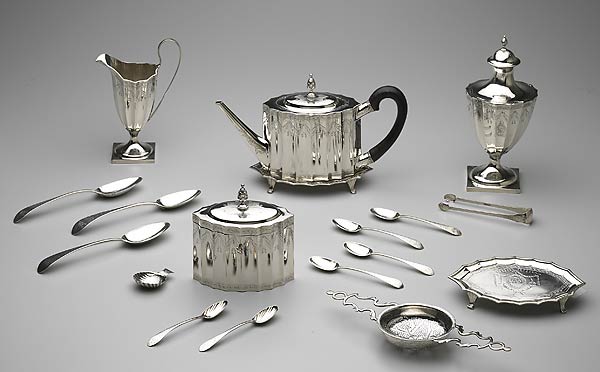I watched the first episode of the John Adams miniseries last night. The beginning of the episode revolves around the Boston Massacre, and at one point, John Adams briefly holds a print which depicts the massacre (shown above). My husband mentioned that he thought the patriot Paul Revere was the engraver of the print. I had never heard before that Paul Revere was an engraver, but my husband was right. Both the The National Gallery of Art and Smithsonian American Art Museum (SAAM) own copies of this engraving (see here and here).1
Actually, Paul Revere made many engravings. Many of them were political, and some were just decorative. Here is are two other engravings by Revere:
Paul Revere, The Able Doctor, or America Swallowing the Bitter Draught. (Royal American Magazine, June 1774; National Archives)
It isn't very surprising that Paul Revere dabbled in engraving, since he was a silversmith by profession. (It's always funny for me to think that Paul Revere actually had a day job - I always associate him with his infamous horse ride, not normal day-to-day life.) Here are some examples of Revere's handiwork in silver:
I think one of my favorite silver pieces by Revere are this silver teaspoon and this silver teapot and stand. You can see some of Revere's other engravings and silver pieces in the online collection of the Addison Gallery of American Art.
My final thoughts on Revere as an artist? I think he was a fantastic silversmith, but his engravings are just alright. It appears that Revere wasn't too passionate about engraving; he mostly used the medium for political propaganda.2 I think this lack of artistic passion separates the quality of Revere's engravings from his beautiful silver work. For example, The Bloody Massacre has several problems with linear perspective (look at the orthogonal lines of the buildings) and disproportionate figures.
I don't want to be too harsh, though. Really, Revere's massacre engraving has a quaint, folksy aesthetic. And hey, that's just the kind of art that a patriot should create. It has kind of a "by the people, for the people" feel, right?
1 Paul Revere is often referred to as "Paul Revere II" since his father, Apollos Rivoire, assumed the name Paul Revere upon emigrating to America.
2 See Esther Forbes, Paul Revere and the World He Lived in (New York: Mariner Books, 1999), 110 (available online here).



